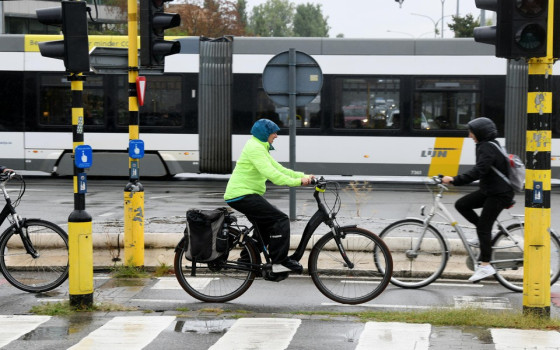
Road Accidents - 1.2 million people die annually on the roads, and a call to make walking and cycling safer

- Europe and Arabs
- Tuesday , 13 May 2025 5:50 AM GMT
Geneva: Europe and the Arabs
Every year, approximately 1.2 million people lose their lives on the roads, more than a quarter of whom die while walking or cycling. Yet only 0.2% of road networks worldwide have bicycle paths, and many communities lack basic requirements, such as sidewalks or safe pedestrian crossings.
This is what the World Health Organization stated in a press release coinciding with the start of the eighth United Nations Global Road Safety Week worldwide, which this year focuses on making walking and cycling safe. According to the UN Daily News Bulletin, a copy of which we received this morning, Tuesday,
"Walking and cycling improve health and make cities more sustainable. Every step we take and every journey we cycle helps reduce congestion, air pollution, and disease, but we must make walking and cycling safe, so that more people choose these healthier and greener choices," said Dr. Tedros Adhanom Ghebreyesus, Director-General of the World Health Organization. Deaths on the Rise
While pedestrian deaths worldwide have declined slightly, and cyclist deaths have stabilized between 2011 and 2021, regional trends indicate a growing risk.
For example, pedestrian deaths in Southeast Asia increased by 42%; in Europe, cyclist deaths increased by 50%; and in the Western Pacific, cyclist deaths rose by a staggering 88%.
A Call for Bold Action
To mark this occasion, the World Health Organization (WHO) has launched a new toolkit aimed at helping governments promote active mobility by making it safer. It notes that despite the benefits of walking and cycling, national policies that encourage them are in place in less than a third of countries.
The new WHO toolkit aims to fill this gap by providing practical, evidence-based guidance for policymakers, urban planners, health advocates, and civil society organizations. The toolkit calls for bold action, particularly the following:
Integrating walking and cycling into transport, health, environment, and education policies;
Establishing safe infrastructure, such as sidewalks, crossings, and protected cycle lanes;
Setting and enforcing safer speed limits in line with global best practices;
Promoting safe road use through public awareness and behavior change campaigns;
Using financial incentives to encourage active mobility.
Global Alliance for Road Safety
This week, the World Health Organization (WHO) joins hundreds of organizations and governments worldwide in demanding urgent action on road safety.
The NGO Global Alliance for Road Safety is mobilizing more than 400 member organizations in 100 countries to support the campaign.
“It is essential that we make our most natural mode of transport safer,” said Etienne Krug, Director of the Department of Social Determinants of Health at WHO. “This is critical for road safety, but also for health, equity, and the climate. We call on all sectors—transport, health, education, and others—to make walking and cycling safe and accessible for all.”












No Comments Found